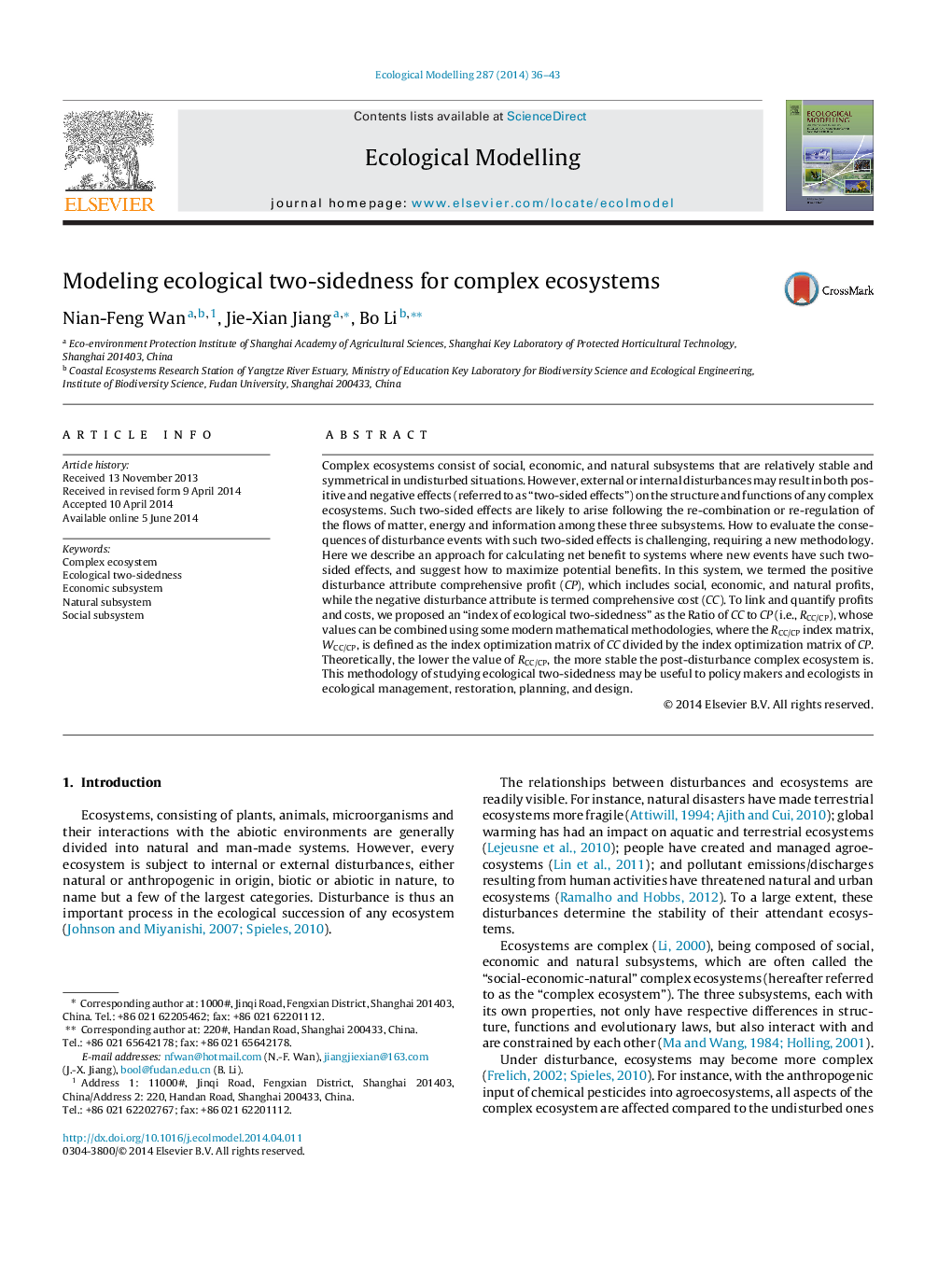| Article ID | Journal | Published Year | Pages | File Type |
|---|---|---|---|---|
| 4375886 | Ecological Modelling | 2014 | 8 Pages |
•Complex ecosystems consist of social, economic, and natural subsystems.•Disturbances lead to both positive and negative effects on the three subsystems.•Positive and negative attributes were termed as comprehensive profit and cost.•An index of RCC/CP was proposed to model the ecological two-sidedness.•The lower the RCC/CP, the more stable is the post-disturbance complex ecosystem.
Complex ecosystems consist of social, economic, and natural subsystems that are relatively stable and symmetrical in undisturbed situations. However, external or internal disturbances may result in both positive and negative effects (referred to as “two-sided effects”) on the structure and functions of any complex ecosystems. Such two-sided effects are likely to arise following the re-combination or re-regulation of the flows of matter, energy and information among these three subsystems. How to evaluate the consequences of disturbance events with such two-sided effects is challenging, requiring a new methodology. Here we describe an approach for calculating net benefit to systems where new events have such two-sided effects, and suggest how to maximize potential benefits. In this system, we termed the positive disturbance attribute comprehensive profit (CP), which includes social, economic, and natural profits, while the negative disturbance attribute is termed comprehensive cost (CC). To link and quantify profits and costs, we proposed an “index of ecological two-sidedness” as the Ratio of CC to CP (i.e., RCC/CP), whose values can be combined using some modern mathematical methodologies, where the RCC/CP index matrix, WCC/CP, is defined as the index optimization matrix of CC divided by the index optimization matrix of CP. Theoretically, the lower the value of RCC/CP, the more stable the post-disturbance complex ecosystem is. This methodology of studying ecological two-sidedness may be useful to policy makers and ecologists in ecological management, restoration, planning, and design.
